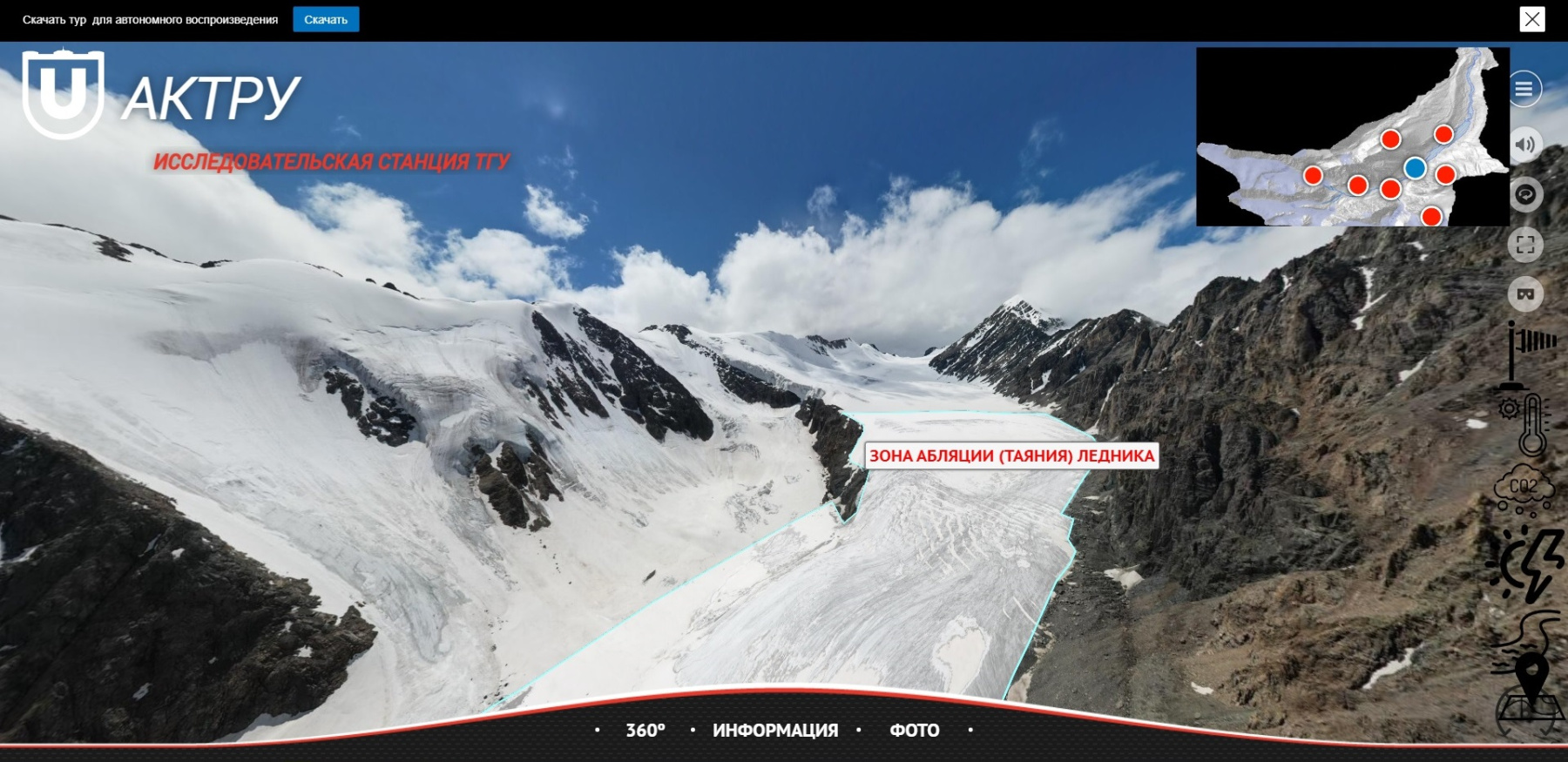Tomsk State University has created 3D tours of its scientific stations Aktru and Kaibasovo. These stations are the core research platforms in the strategic project Global Earth Changes: Climate, Ecology, Quality of Life, with the support of the program Priority 2030. Not only do 3D tours enable people to see unique natural objects studied by scientists—they familiarize virtual explorers with the stations' infrastructure and equipment.
“The tours will be of interest to both the general public and the scientific community. They will be especially useful to those studying the transformation of the Earth's surface and the planet's ecosystems under changing climate: such research could be conducted at the stations of Tomsk State University,” explains one of the experts involved in the project, Aleksandr Erofeev, head of the Laboratory of Glacioclimatology of TSU Faculty of Geology and Geography. “TSU scientific bases are unique: for example, the Aktru base in the Altai Mountains was founded back in the 1950s for glaciological research. Even then it was obvious that glaciers are natural indicators that most clearly and objectively reflect climate change.
From the largest floods to rising sea levels, the melting of glaciers, which is now seen in different parts of the planet, can itself be the starting point for other natural disasters. The Aktru station enables scientists to conduct year-round monitoring of glaciers and receive data that help understand the processes taking place and make forecasts.

A 3D tour around the station and its surroundings enables users to follow the trail of scientists, find themselves in places that even a well-trained person would find it hard to get to, and understand that studies of melting glaciers are sometimes carried out at the risk of one's life.
The second base that you can experience virtually is the Kaibasovo base. It is located in the floodplain of the Ob, the longest river in Russia, which is sometimes called the second Amazon River. Kaibasovo is the main site for studying the cycle of carbon—the main component of greenhouse methane gases and carbon dioxide.
“During the spring, the Ob can reach widths of up to 60 kilometres, meaning that the floodplain would be fully underwater,” says the director of the TSU Center of Excellence BioClimLand, Sergey Kirpotin. “At the same time, a large amount of phytomass gets cultivated underwater, turning the floodplain into a bioreactor: decomposition of organic matter leads to the increase of the dissolved carbon and methane concentration in the water. Year-round sampling of water in this area makes it possible to obtain data on the concentration of dissolved carbon in the water, and the volumes of its emission into the atmosphere and transfer into the world’s oceans.

The Kaibasovo station is the central point of the carbon polygon created by Tomsk State University and its partners in 2021 for carbon monitoring and development of technologies for its sequestration. Additionally, the site contains a carbon farm, where scientists conduct experiments on plants to test their ability to absorb carbon.
TSU scientific stations Aktru and Kaibasovo are integral parts of a curriculum to train environmental ecologists, geologists, geographers, climatologists, and other professionals. By roaming around the stations recreated in 3D, one can see what students and early-career scientists do during field practice, how they learn to take samples, and much more.
Photos, videos, articles, and recordings collected by the project participants will make the virtual explorers feel like they are actually present at the TSU stations where researchers are currently making important discoveries.
For reference: The 3D tours were created with advisory input from the head of the Laboratory of Glacioclimatology of the TSU Faculty of Geology and Geography, Aleksandr Erofeev; director of the TSU Center of Excellence BioClimLand, Sergey Kirpotin; director of the Center of Collective Use Megaprofile under the authority of the TSU Research Division, Sergey Vorobiev; coordinator of the TSU SecNet system involved in the study of Siberia and the Arctic, Olga Shaduiko; and staff scientist of the Laboratory of Biodiversity and Ecology of the TSU Biology and Biophysics Research Institute, Viktor Nikitkin. We thank the experts for providing us with the photographs and videos. The author of the project is Elena Fritz; the editor is Larisa Ignatenko; and 3D shooting and technical work is by Igor Muravyov.